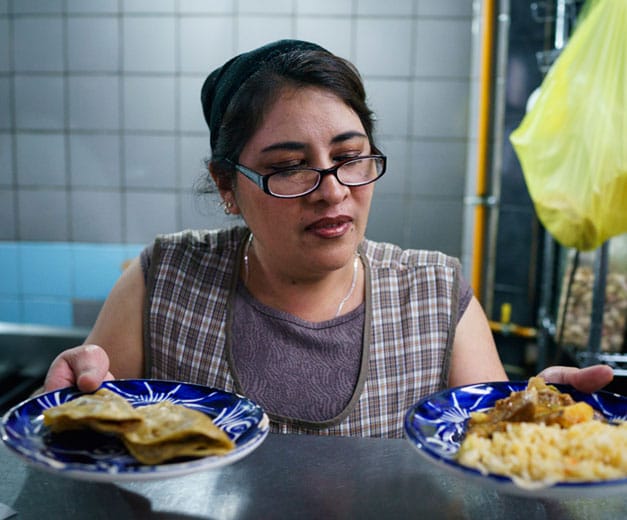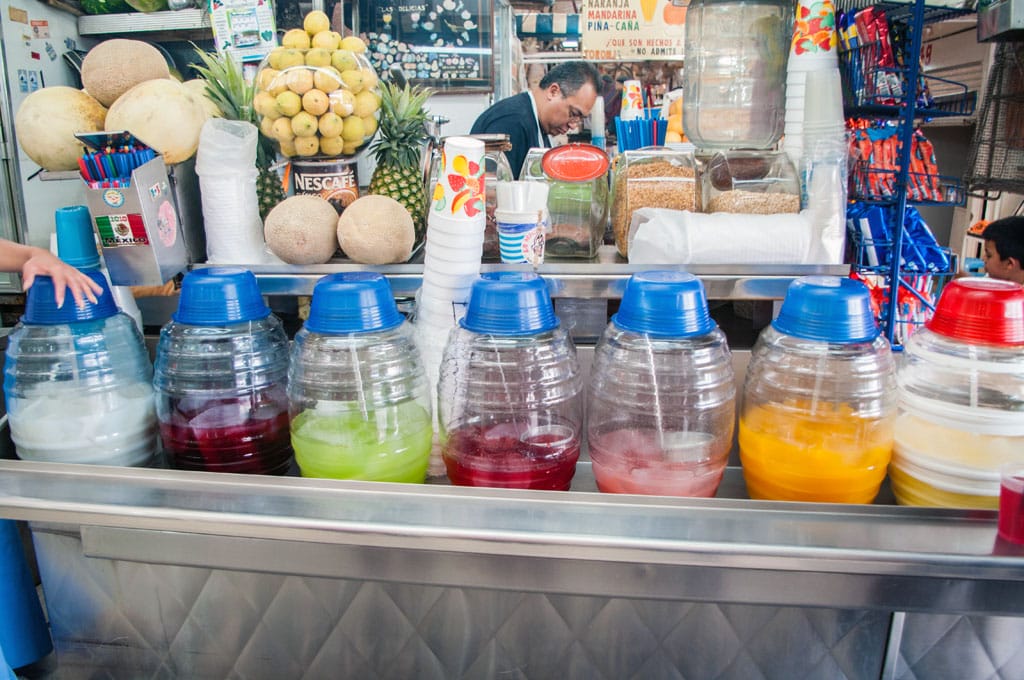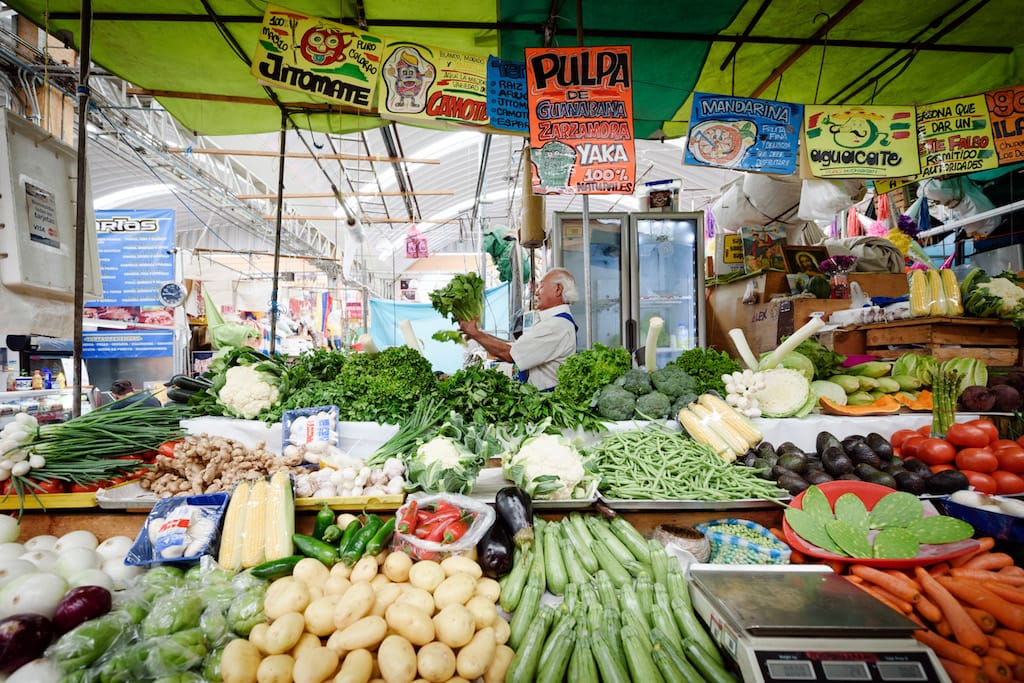Has mezcal gone the way of avocado toast, an item that’s become shorthand for cliched hipster trendiness? If you think yes, a visit to Mis Mezcales in Mexico City’s Colonia Roma may be in order.
There, you will find Omar Trejo sitting behind his unassuming makeshift bar, parceling out sips to the uninitiated and reminding everyone who stops by his small liquor store devoted to small-batch Mexican distillates that before it became a “buzzy” spirit, mezcal was an elixir heavily-rooted in the soils and stories of Mexico.
As Omar makes clear to those who come in, every bottle of mezcal tastes different, even from the same brand, the same agave variety and same year. It’s one of the drink’s greatest strengths and probably one of the greatest frustrations for drinkers who expect the standardization of tequila.
“I’m looking for this one bottle I tried at Pujol last night,” one of his clients sheepishly admits after 15 minutes feigning extensive mezcal experience, referring to a meal he had at one of Mexico City’s most expensive restaurants. Omar is kind, explaining it’s impossible to find the exact same flavor in two different bottles. Mezcal’s vast range of flavors is essentially why Omar believes it’s having its moment.
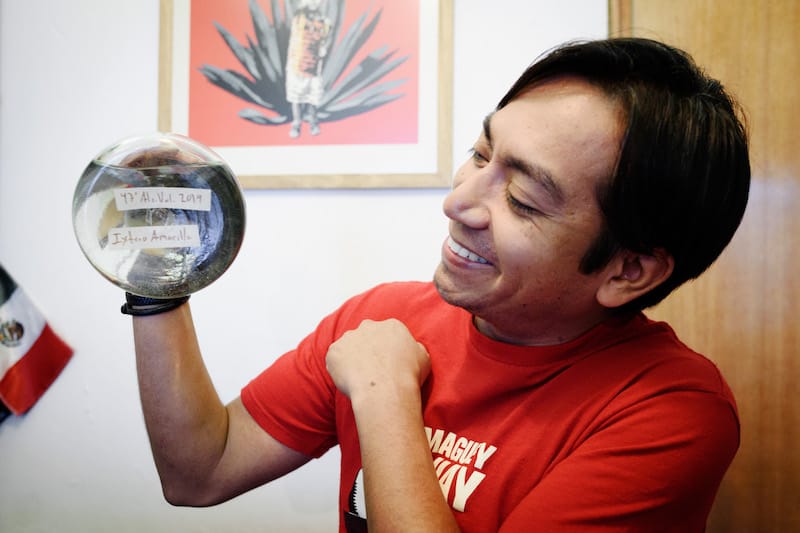
“Mezcal has some attributes that are very sought-after right now – it’s organic, it’s local, its limited production – so yeah, it’s trendy. But mezcal goes way beyond its reputation as the drink of hipsters,” he says. “It’s made the jump into another space – gourmet, high-end restaurants – which might also be considered pretentious, but I think that’s one of its natural spaces.”
“It’s always impressive to me how rudimentary processes can create a spirit with such elegant flavor.”
But at its heart, mezcal is a drink deeply tied to Mexico’s poor, rural countryside, which is why it has spent many years below the radar, not exactly considered “sophisticated.” It was mezcal’s humble origins that actually caught Omar’s attention. His first trips to the state of Oaxaca, the heartland of Mexico’s mezcal production, weren’t in search of the spirit but he was eventually drawn in by small, family-run palanques – mezcal distilleries – that shared with him and his girlfriend the secrets of their world. They invited them in to try their product, gave them impromptu tours and shared their family history. Once, they were even asked to join in on the butchering of a cow.
At the time Omar, 39, was working in information technology for the Mexican government, but his growing love of mezcal revealed to him a gap in the market – there wasn’t a one stop shop to buy a wide variety of artisanal mezcal brands. As a result, he and his girlfriend decided to open Mis Mezcales, first with a store in the city of Oaxaca seven years ago and then five years later in Mexico City.
Families in Oaxaca and beyond (mezcal is made in virtually every state in Mexico, unlike tequila, which is only made in five) have been producing mezcal for generations, sometimes hundreds of years. The Sanchez family, owners of mezcal brand Rey Campero, which line the shelves in Omar’s shop, has been making mezcal for four generations. They live in an extremely remote village in Oaxaca, all but inaccessible for someone who doesn’t know which sign-less dirt road to turn on, or where the river gets shallow enough to drive across. Seven years ago, when they finally registered their brand, they were still selling door to door in their community of 150 people, as well as in a few restaurants in the city of Oaxaca. Then, some of the family’s first generation of college grads decided to focus full-time on the business, promoting their brand and reaching out to distributors in the United States.
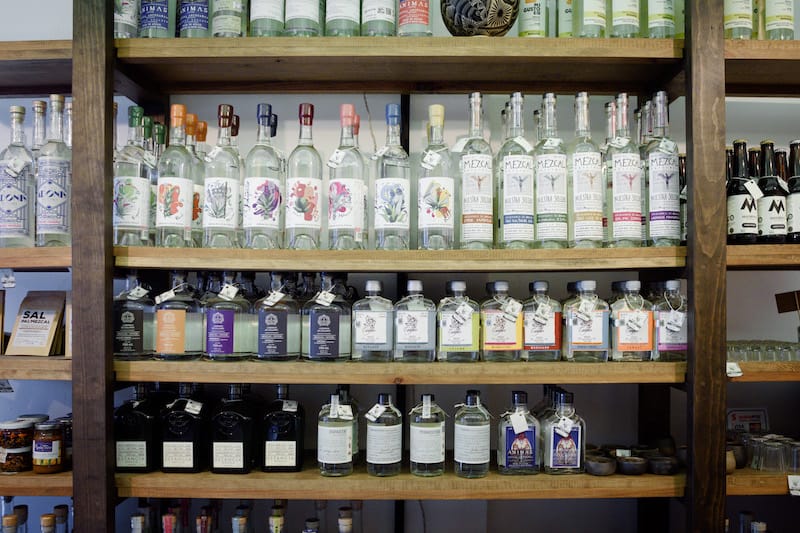
“People tell you all kinds of things when they are trying to sell you something,” says Omar, thinking back to when Gil Sánchez and his uncles, representing Rey Campero, first visited Omar’s shop in Oaxaca. “But then we took the three-hour trip out to see their distillery and everything they told us was true. They are just incredibly hard workers. From this tiny community that celebrates their patron saint on February 2nd with tamales, barbacoa and mezcal, they now have a presence in some of the most high-end restaurants around the world.”
While there are a few dozen major commercial brands, Mis Mezcales only buys from small producers that grow, process and sell their own mezcal. Many of the big names buy, blend and slap their logo on other peoples’ product. They are disconnected from the land and the natural cycle it requires (including replanting maguey), and their production demands can throw delicate economies and ecologies off balance.
“For me, the brands that are valuable, that are doing something different, that have a long tradition making mezcal, are few and far between. I worry about overproduction in the market, not only that it will sink mezcal prices but that there will be an ecological cost as well,” says Omar. That means most of the bottles in Mis Mezcales are one-of-kind, especially Omar’s own personal stash that he is more than happy to let you sample from.
Mezcal has long been an artisanal spirit, with most palanques run by families and, up until the last 15 years or so, distributed and drunk locally. Unlike tequila, which can only be made with blue agave, mezcal can be made from a wide range of agave/ maguey varieties, lending it a flexibility that results in a unique flavor coming out of each distillery in the country, even on lands that border one another. The heart of the agave – called piñas in Spanish – are generally cooked in an underground pit, giving mezcal its signature smoky flavor, distinct from tequila hearts, which are steam cooked.
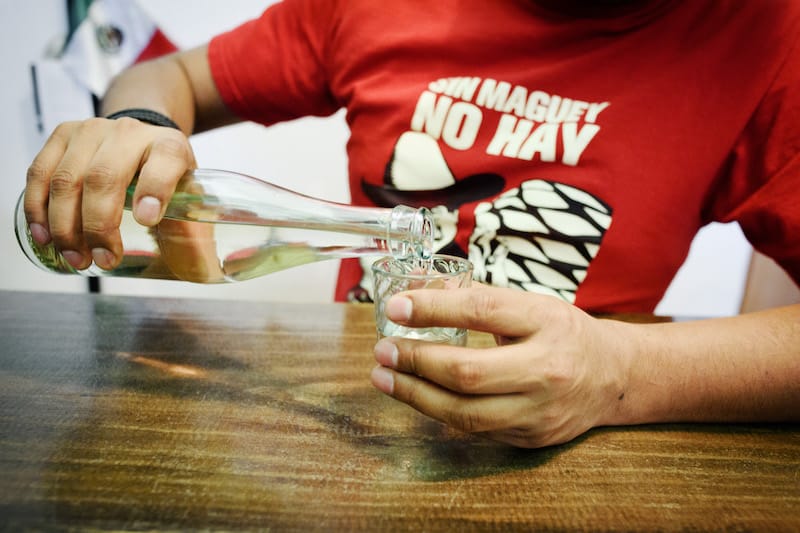
Due to market demands and the expense of buying barrels for aging, most mezcal you find on the shelves are joven (young) – zero aging – and distilled two, maybe three times at the most. Some brands step out of bounds during the creative process: Chacolo distills its mezcal in clay pots, an old-school technique that few still practice. “They don’t base it on the level of production,” says Omar, “but instead on their 200-year tradition and the flavors they can create.” Others distill in the trunks of guanacaste trees (part of what is called a Filipino distiller) or ferment in underground barrels. There’s mezcal that’s distilled with a chicken breast and mezcal fermented in water wells. “It’s always impressive to me how rudimentary processes can create a spirit with such elegant flavor,” says Omar.
These connections are paramount, especially to Omar, who says ruefully that there has never been real justice for rural people, at least not in Mexico. He sees mezcal as part of that solution. “Mezcal is one of the only agricultural products that is produced and managed by the people that make it and sell it, which is pretty uncommon. Normally, people that have their milpa of corn, unless they are making handmade tortillas, are selling all their corn to someone else. Same with avocado, tomatoes and other agricultural products. [Mezcal] is a circle of production that the farmers themselves can control. The concept of ‘the land belonging to those that work it’ applies very nicely here.”
“I don’t know promoters or distributors,” he says. “I know the people that carry the pinas, who harvest the maguey, who do the distilling, who stay up all night with the mezcalero waiting for the finished product.”
This article was originally published on May 24, 2019.
 July 6, 2019 El Dux de Venecia
July 6, 2019 El Dux de Venecia
Visiting establishments with a lot of history always warms the cockles of our heart – […] Posted in Mexico City August 6, 2019 Ask CB
August 6, 2019 Ask CB
Dear Culinary Backstreets,
I’ve heard about drinks in Mexico called aguas frescas, but […] Posted in Mexico City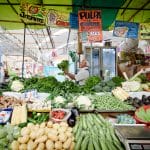 June 18, 2019 Market Watch
June 18, 2019 Market Watch
“What year did you marry your wife?” we ask Rafael Hernandez, known as El Negrito of […] Posted in Mexico City
Published on September 16, 2021
Related stories
July 6, 2019
Mexico CityVisiting establishments with a lot of history always warms the cockles of our heart – even more so when that establishment is the oldest surviving cantina in the city. El Dux de Venecia didn’t start out as a cantina, but it became a drinking establishment in Azcapotzalco – a farming community that became part of…
August 6, 2019
Mexico CityDear Culinary Backstreets, I’ve heard about drinks in Mexico called aguas frescas, but what exactly are they? Visitors to Mexico are sure to encounter aguas frescas, a popular category of drinks that are ubiquitous at food stands and eateries around the country. These colorful beverages, whose name literally means “fresh waters,” come in a variety…
June 18, 2019
Mexico City“What year did you marry your wife?” we ask Rafael Hernandez, known as El Negrito of Mercado Medellín, one Saturday afternoon at his vegetable stand. “I don’t know!” He breaks into uncontrollable laughter, “She knows though!” “What year did we get married, Gorda?” he asks the woman next to him. Her hair is tightly permed…














































